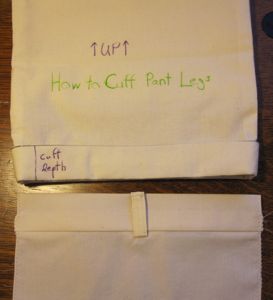Tonight I teach my third class at the Sew-Op, and the second that is of my own design. It is a basic course on clothing alterations. The idea is to talk a bit about how clothes go together and about the most common alterations, as well as any tips and tricks I can pass on, and then let the class be guided by the particular interests and needs of the participants. I have a handout that should contain more information than we’re able to really go through in a two-hour class, so they have a reference for future use.
As part of the preparation I also posted a new page, which has been in the works for some time now. You can see it above as “Sewing Tidbits.” It is a sort of glossary, including links to other places with useful information. While the alterations class was the motivation for finishing it, there are non-alteration entries as well.
Looking through my small library of sewing books, it turned out only two were really good for alterations to existing clothes rather than to clothes you are sewing from scratch. One is so out of print Amazon doesn’t even have a front cover image for it: The Complete Book of Sewing, new revised edition with over 750 explanatory pictures, by Constance Talbot, 1943. [I am of the opinion that the best sewing books are from the 40s, 50s, and 60s, after electric sewing machines and mass production were well-established, but while people still made a lot of their own clothing.] Ms. Talbot has an entire section devoted to remaking and remodeling – changing the features of clothing either to eliminate worn parts or update its style. The other book that is good, which is probably not a surprise, is The Costume Technician’s Handbook, by Rosemary Ingram and Liz Covey, 1992 (the link is to a newer edition). This was one of the two textbooks for my Introduction to Costuming class in college, and since theaters often have to contend with low budgets, they have to make costumes work as many times as possible. This book has a thorough section on alterations with many, many pictures. Some of the alteration suggestions aren’t great for personal clothing, because in live theater you know the audience is at least a few feet away at all times so the fine details aren’t as key, but many of them are.
I have some show and tell pieces (“manipulatives,” they would be called in education): some children’s clothes I picked up at the thrift store, a partial pant leg to demonstrate how cuffs go together, and a partial waistband. The cuff and waistband are partially stitched but go together the rest of the way with velcro, so you can undo and redo them.

I’ll share some of the other parts of the class, and things I learned or wrote up while creating the sewing tidbits page, here over the next few posts. Please feel free to ask questions and make requests!